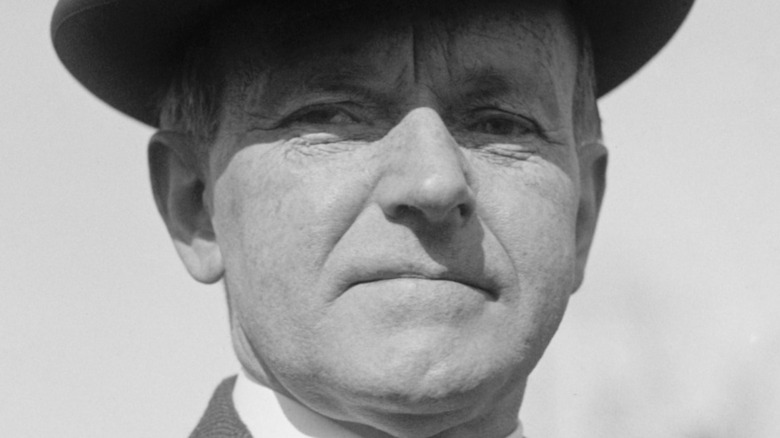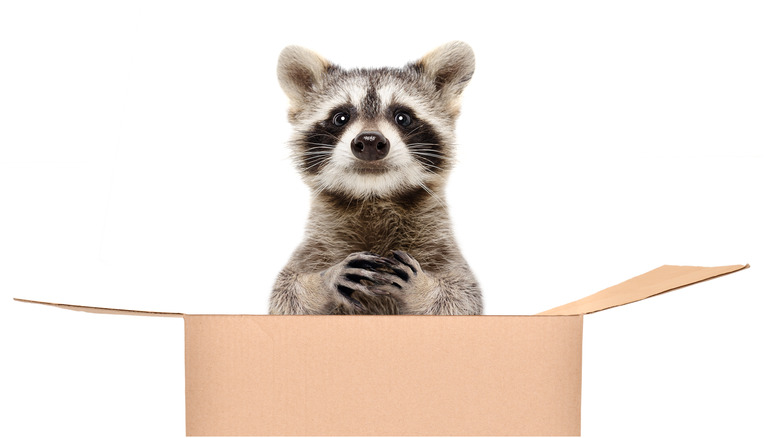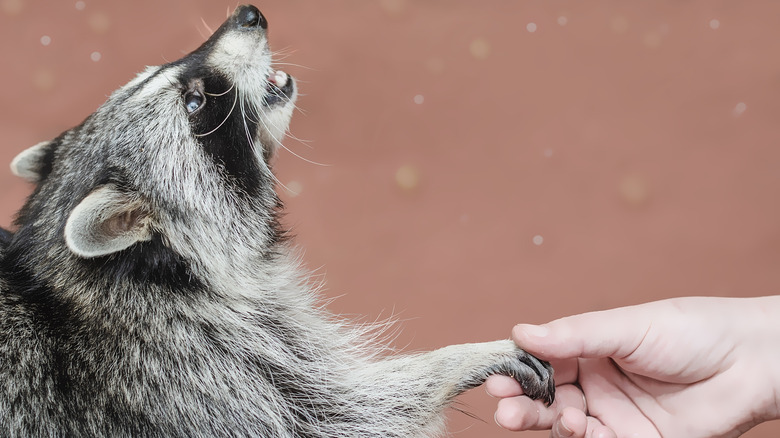The Surprising Meat Calvin Coolidge Almost Ate For Thanksgiving
Thanksgiving as we know it is a holiday created by U.S. presidents. George Washington was the first to celebrate Thanksgiving in the White House, declaring Thursday, November 26, 1789, to be a national day for the giving of thanks. In 1863, perhaps thankful that the tide may have been beginning to turn in the Civil War, Abraham Lincoln established the last Thursday in November as Thanksgiving Day with capital letters, while Franklin D. Roosevelt later specified that the fourth Thursday in November would be the official day. (In 1939, the White House Historical Association says that November had five Thursdays, which put Black Friday a bit too close to Christmas.)
For the most part, the presidents and their families have adhered to a pretty traditional menu of turkey and all the trimmings. Woodrow Wilson enjoyed his turkey with oyster soup and buttered toast but skipped the cranberries due to wartime (WWI) economies. FDR's holiday meal included "small sausages and beans" (beanie weenies?), while the Reagans had monkey bread on their table and George and Laura Bush enjoyed pumpkin mousse trifle.
Calvin Coolidge, however, had the chance to become the president to serve what would have probably gone down in White House history as the most unusual Thanksgiving dinner ever. According to The Washington Post, Silent Cal passed on the opportunity, but he did gain a new pet instead. So what was this mystery meat-turned-companion? A critter better known for knocking over trash cans than appearing on dinner tables.
Coolidge received a raccoon meant for the White House table
in November 1926, Calvin Coolidge received a strange package in the mail sent by a woman in Mississippi (via Atlas Obscura). When the package was opened, it was found to contain a live raccoon accompanied by a note suggesting it be cooked and eaten and promising the meat would have a "toothsome flavor." As a matter of fact, the idea of eating raccoon meat wasn't entirely unknown at the time. Native Americans had eaten raccoon as part of their diets, as did slaves who would trap the animals to add a little protein to the scanty fare provided by plantation owners. In fact, some hunters today will still trap, cook, and eat raccoon, with Grand View Outdoors terming the meat "greasy, but good." (They recommend baking it on a bed of sweet potatoes.)
Coolidge, however, adventurous eater though he was, declined to eat the gift raccoon. Believe it or not, he received a certain amount of flak in the press for this decision. In the Boston Herald, the headline read "Coolidge Has Raccoon; Probably Won't Eat It." (1926 must have been a slow news year.) Instead, the president took one look at that cute masked face and decided to set another place at (not on) the Coolidge family table.
The Coolidges named their new pet Rebecca
Calvin Coolidge, himself an animal-lover, was married to an equally animal-loving woman named Grace. As The Washington Post tells it, the first lady immediately recognized that their Thanksgiving visitor was "no ordinary raccoon." The first family adopted her, and by Christmas Atlas Obscura, says she received a collar with an engraved steel plate bearing her new name: Rebecca.
Rebecca the raccoon lived in the White House for two years, dining on corn muffins and playing in the bathtub. When the Coolidges needed to move into temporary housing in Dupont Circle while the White House was undergoing some renovations, Rebecca accompanied them to their new digs, as well. (History does not record whether they ever got their security deposit back.) She also accompanied them on a family trip to South Dakota and was an honored (if ill-behaved) guest at the Easter Egg Roll on the White House lawn. Unfortunately for the president, Rebecca did prove "toothsome" upon at least one occasion, sinking those teeth into his hand.
When Coolidge left office in 1929, he felt that Rebecca would be better off remaining behind in D.C. at the Rock Creek Park Zoo. Rebecca apparently disagreed with this decision, and Atlas Obscura relates that she showed her disapproval by dying shortly thereafter. While our story does have a sad ending, at least Rebecca led a charmed (if short) life for a few good years instead of meeting her end in the White House kitchen.


